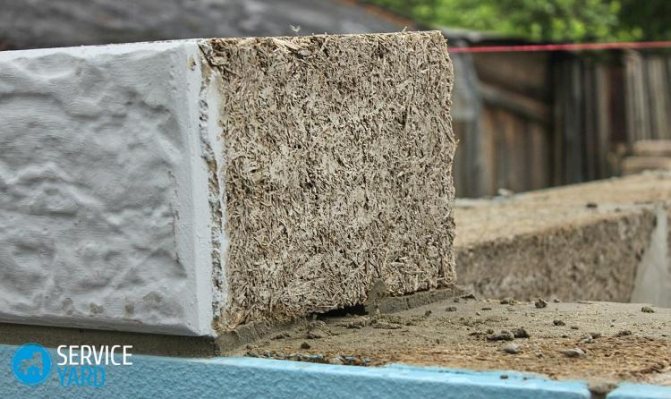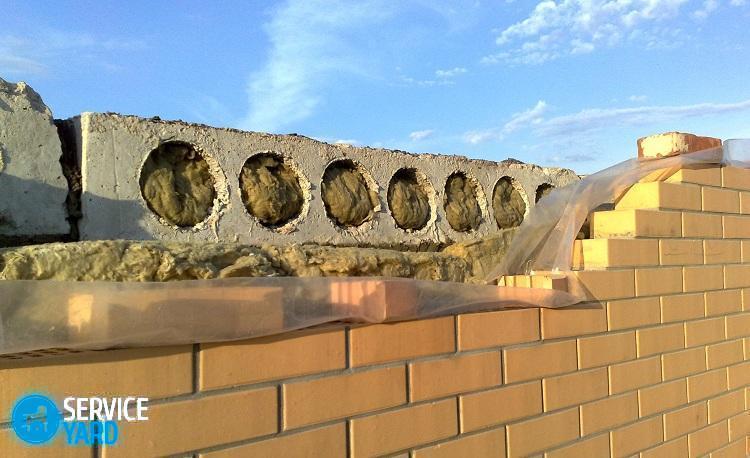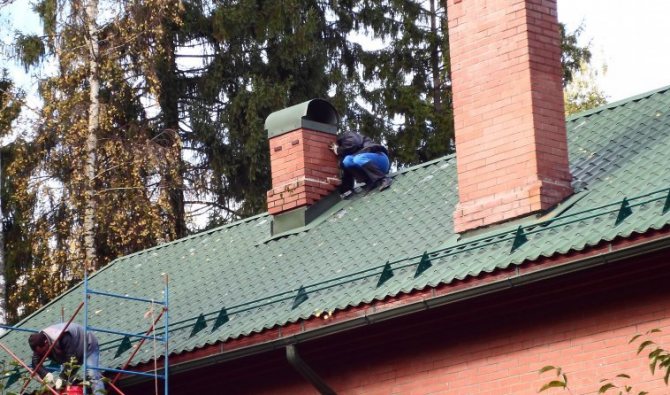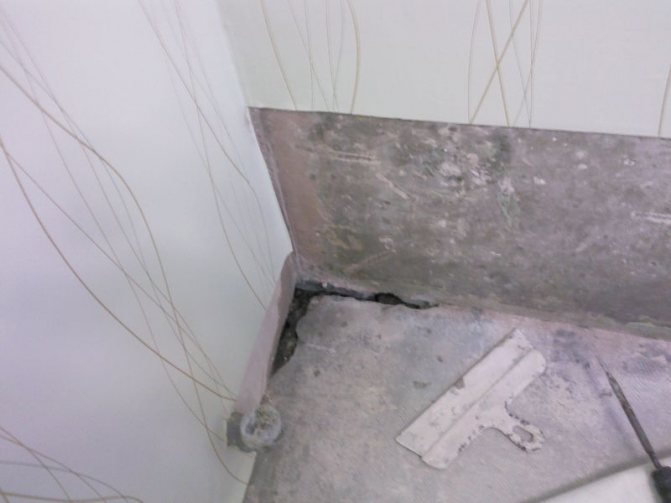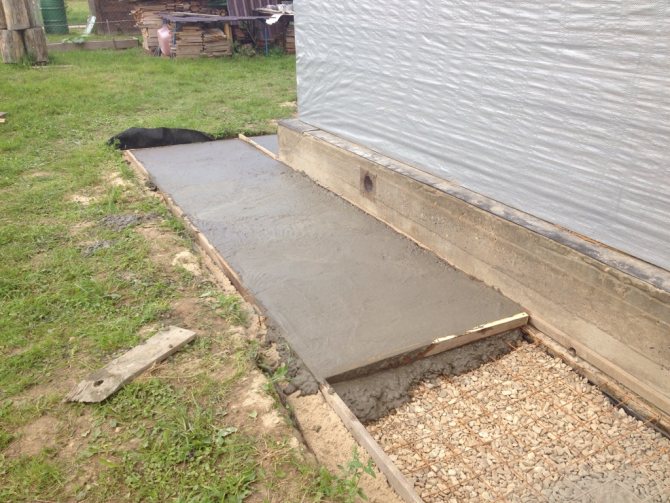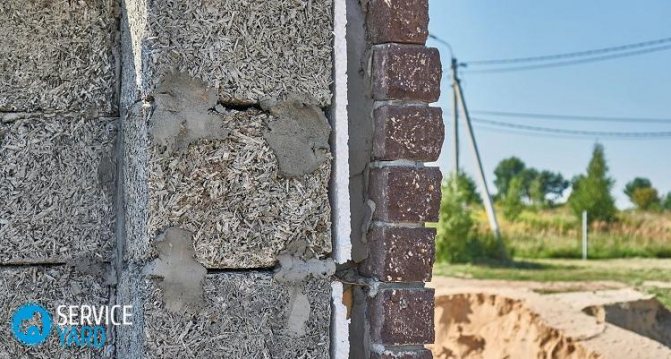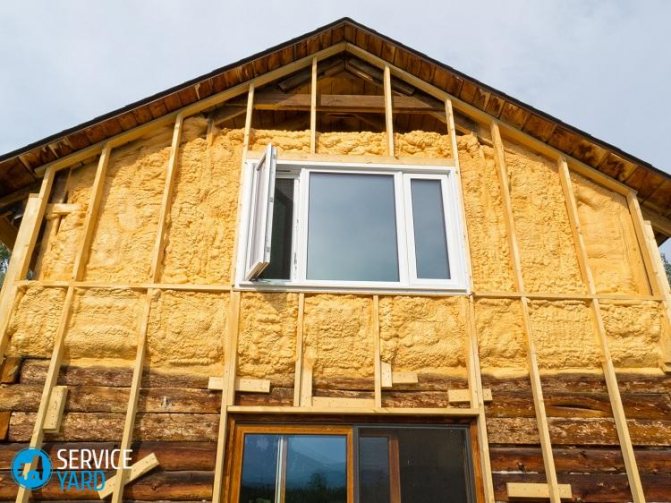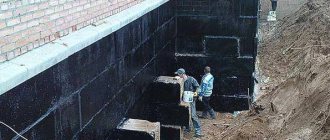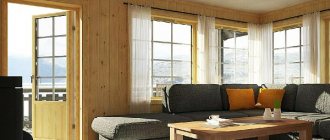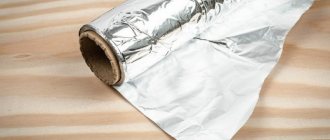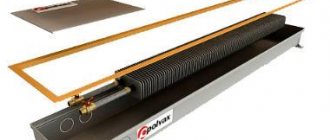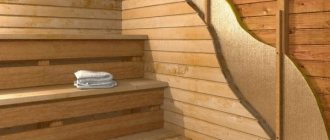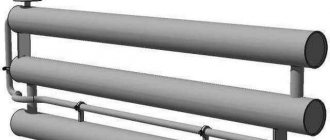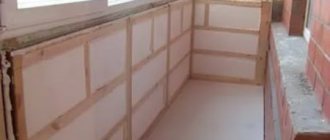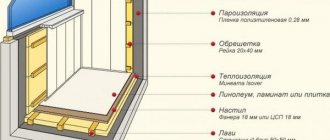Reasons for freezing walls
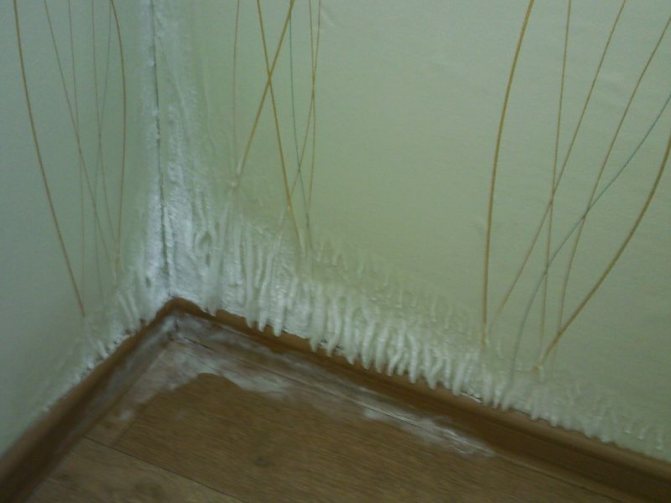
A cold bridge occurs when the walls are not properly arranged
Determining the cause of the freezing of walls is not such a simple matter. Walls can freeze through in any houses: brick and panel type, regardless of their location.
It is clear that the walls begin to freeze due to the appearance of the so-called cold bridge. The question under what conditions it can arise should be analyzed in more detail.
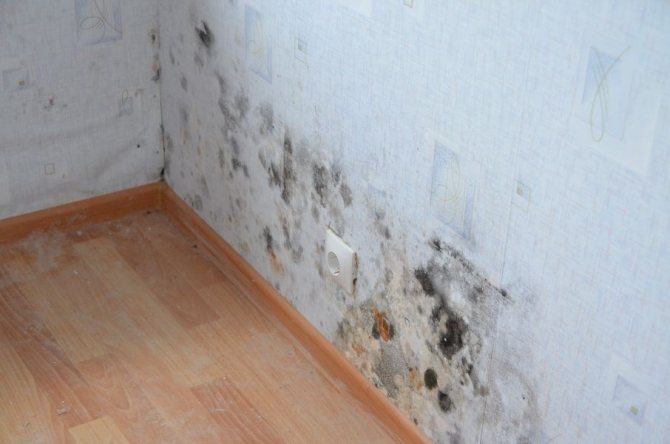

Often freezing of walls goes hand in hand with dampness and the formation of fungus.
The main reasons for its appearance include:
- depressurization of interpanel seams;
- small wall thickness of a panel house (not suitable for climatic conditions);
- filling the walls with moisture both from the inside and outside (internal flooding with water from neighbors, rainwater ingress into the destroyed seam);
- the destruction of the building foundation leads to the divergence of the panels and cracking of the brick walls;
- leaky joint between closely located houses (distance from 0.5 to 2 m).
All of these reasons can occur equally often. Each of them has distinctive characteristic manifestations.


Violation of the integrity of the seams can cause the formation of a cold bridge
The cause of the outbreak and destruction of the seam between the panels can be:
- the use of an unsuitable material (mastic, sealant) for sealing joints (the location of the house and external environmental conditions play an important role);
- the work performed to insulate the seams was carried out by unskilled specialists, as a result of which there were voids in the sealed joint, where moisture gets, which changes its state with temperature drops and destroys the wall;
- the produced external wall insulation is not made of high quality (if produced).
Cold bridges can appear not only in block buildings, the wall in a brick house also successfully freezes through, where there are no panels and seams between them. In this case, the reason is often an excessive amount of moisture in the apartment or a decrease in the temperature in the room.


Cold corner
The temperature regime in a room or apartment may decrease for the following reasons:
- poor sealing of window openings (the production of the product or installation work was not carried out according to technology);
- not tightly and not hermetically installed entrance doors in the room;
- blows out from the ventilation system;
- airiness of the heating system;
- low temperature for heating the room.
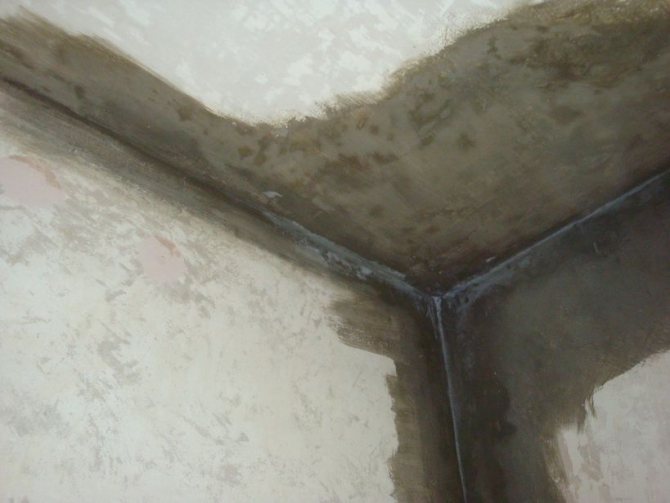

Moisture walls are also at risk of freezing in winter.
Many owners do not even know that they can make a freezing wall on their own, without knowing it.
Performing quite often wet cleaning of premises during the cold period, not correctly storing vegetables on the balcony and frequently watering a large number of indoor plants, each of us can harm ourselves by saturating the wall of the building with excessive moisture.
To prevent such processes from happening, it is necessary to often ventilate the room and prevent waterlogging in the rooms.
Determine the source
In new buildings, the problem of freezing of walls is rare. One of the following factors may be the cause. But the ancient houses made of panels can freeze due to at least two reasons. So what to do if the wall freezes over?
The reason is ventilation
To begin with, it is important to check the functionality and quality of ventilation in the rooms. The channels must be clean, no foreign objects.If the ventilation system is not functioning at all, then none of the fixes will help to achieve the best result.
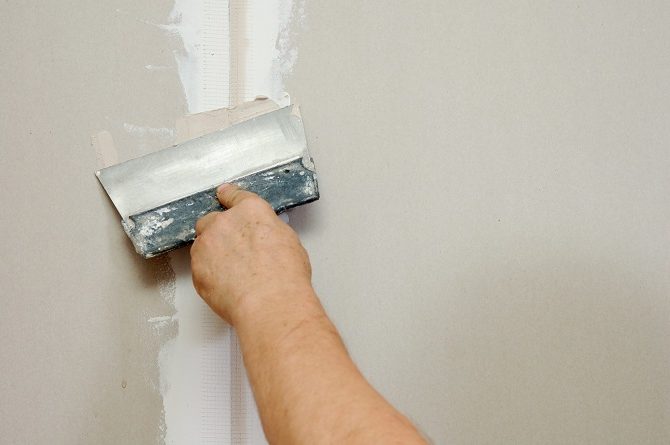

You can often engage in airing the room or forcibly remove moisture from the rooms by opening all windows and doors. If there are improvements, then the problem is precisely in the ventilation, its repair will help to cope with the freezing walls.
The reason is insufficient insulation
The first signal of insufficient heating in winter is the formation of condensation on the walls. If you leave the problem behind, the surface will begin to mold. But how does this moisture appear? From physics, you can recall the concept called "dew point". It represents the point in the wall where moisture or steam begins to turn into water. The colder it is in the room, the closer the dew point gets. Moisture begins to form on the inside of the wall. If such freezing of the walls is observed, then the only solution is to insulate them from the outside.
If you carry out insulation from the inside, then this will not solve the problem, but will only eliminate visible signs. However, behind the insulation, the wall will begin to get wet even more, and mold will begin to spread.
Poor sealing
And what when the wall in the apartment freezes due to poor sealing? How to determine this? It is required to check all openings for drafts and cracks: balcony, doors, windows. To do this, it is enough to use a hand (she will feel a slight breath, if there is one) or matches / lighter, then the flame will burn unevenly, and "dance" or go out altogether. The disadvantage of this method is that for a full check, you will need to remove the old finishing material (wallpaper, paint, tiles) from the corners. Nevertheless, if the corners in a brick house freeze through, then it will still not work to save the old wallpaper.
How to act when it finds the source of the cold? It needs to be eliminated. For example, small gaps are filled with silicone sealant. Large ones are better to cover with plaster. However, in order to get rid of freezing in the corners and restore the microclimate once and for all, it is better to insulate the room outside. Moreover, this can only be done with a problem wall (at the corners or at the joints of panels).
There is an opinion that the best option for sealing cracks and seams is polyurethane foam. Yes, it is good for dry rooms. But with high humidity, its use is not rational. It will begin to absorb moisture from the outside and carry it inside the room. This is a kind of cold bridge. As a result, the problem will not go anywhere.
The walls are freezing due to the seams in the panel house, what should I do? The seams are made taking into account small deformations. Therefore, it is not enough to hide them with ordinary putty. Since it will crack again at the slightest movement. In this case, a composition is selected that is not afraid of deformation.
Eliminating the problem
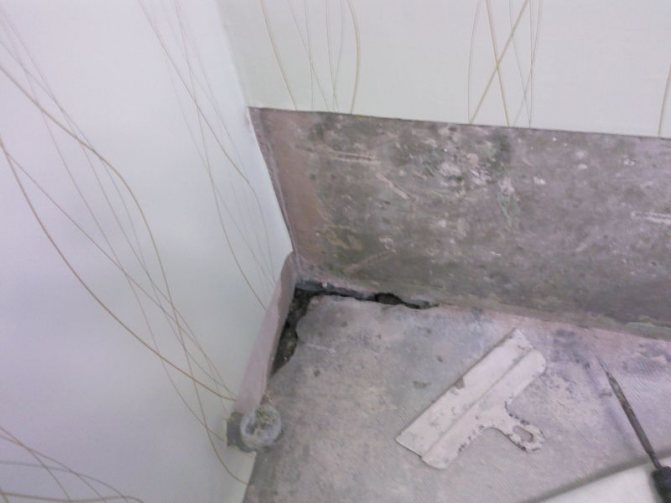

The problem of freezing is eliminated by organizing internal or external insulation
If you yourself have found freezing zones on the walls, you should immediately take appropriate measures to eliminate this problem.
Often there are such situations that the residents of an apartment building cannot get the heating power to be added from the heating network, and electricity tariffs are constantly growing, and there is no other way out but to insulate the room on their own.
Before proceeding with the insulation of an apartment, you need to decide which of the options for thermal insulation of the room you choose: internal or external insulation.
For the production of outdoor insulation, it is necessary to invite industrial climbers or use the services of an elbow tower.
Internal insulation of a room, wall or apartment as a whole can be done independently, but this will significantly reduce the volume of the room. So, which of the options for sealing and sealing the wall to choose, it is up to each owner individually.
Additional insulation
Most often, the outside of the house is insulated with foam.
As mentioned above, 2 types of thermal insulation can be used for a frozen wall: external and internal.
Despite the fact that skilled workers are involved to insulate the building from the outside, each owner should know how this process takes place.
When performing external work on the insulation of the facade, polystyrene is used as a heater, which is glued to the wall and fixed on the dowel in the form of a "fungus".
After that, the outer surface of the insulating material is reinforced with a plaster mesh (glued onto an adhesive), on which a decorative coating is applied in the form of facade paint or decorative plaster.
You can see an illustrative example of external insulation layers in the diagram below.
To carry out internal work on wall insulation, an additional frame is created from an aluminum profile or wooden bars. The width of the frame depends on the thickness of the insulation used.
When creating additional thermal insulation for rooms inside, mineral stone wool is most often used, since it does not contain harmful impurities and has excellent thermal conductivity.
On top of the installed insulation mats, a layer of vapor barrier coating is attached to protect against moisture penetration. For more information on the physics of wall insulation, see this video:
It is recommended to use maximum density mineral wool for internal insulation of premises. Despite the fact that such a product will be quite expensive, you can resort to minor reductions in the room, while creating good thermal insulation and sound protection.
Getting rid of freezing corners
The ideal way to solve the problem is to insulate the entire facade from the outside and reliably seal the seams. It is quite possible to repair your own country house, but in an apartment building you will have to turn to the management company for help. But don't despair. And in a single apartment, you can get a good result.
First of all, you need to remove the wallpaper. If there are no visible cracks, then the walls are tapped with a hammer - where there are voids, the sound will be dull. Next, remove the plaster over the detected cavities and thoroughly dry the corner. If there is mold, be sure to treat it with special antifungal agents. Sometimes mold damage is so extensive that acid, blowtorch fire, or surface milling is necessary. All cracks and voids are filled with polyurethane foam or liquid foam. This will prevent moisture from entering the room, even if there are cracks in the outer wall. Finally, scrape off the remaining foam and plaster the corner. It is best to carry out work in the warm season in order to completely get rid of dampness and mold inside the room.
In the event that very large voids are found, do not fill them with mineral wool or tow, since these materials contribute to the accumulation of moisture. Better to use the same. It is resistant to moisture, does not rot and mold, has high adhesive properties, does not lose its qualities when frozen.
Insulation of the entire facade from the outside
Today, manufacturers offer a variety of materials that greatly facilitate the repair process and take it to a qualitatively new level. For example, special heat-insulating ("warm") - light mixtures, in which instead of sand used microscopic granules of expanded polystyrene or light natural fillers. Such plaster is several times lighter than usual, it is well applied and adheres. Due to the presence of air pores, warm mixtures have a high vapor permeability, regulate condensation and provide a healthy indoor climate.A layer of warm plaster of 50 mm in terms of the insulating effect is equivalent to a masonry of one and a half to two bricks or a two-centimeter layer of expanded polystyrene.
Not so long ago, new materials appeared on the market, produced by different manufacturers under different trade marks, but united by the general name "liquid thermal insulation". It is indispensable for such problem areas as freezing corners. The paint-like insulating slurry consists of hollow microspheres (ceramic, glass, silicone or polyurethane) that effectively reflect thermal radiation. Microspheres are suspended in a binder composition made of synthetic rubber or acrylic polymers, antifungal and anticorrosive additives, and coloring pigments. Such a composition gives the liquid thermal insulation the properties of waterproofness, flexibility, lightness and strength. The thermal conductivity of liquid heat insulators is much lower than that of conventional heat insulators. Several layers of such paint can replace 5-10 cm of polyurethane foam or mineral wool.
True, all this is only from the words of manufacturers and sellers, many practical tests have proven the ineffectiveness of such a paint as a heater. Its main task is to reduce heat loss on hot water pipes and boilers.
Applying liquid insulation
The problem of freezing corners can be prevented even at the stage of building a house or renovating a new building. In accordance with the laws of physics, the temperature of the inner surface of a corner is always lower than the temperature of the walls that form this corner. Experienced designers say that ideally the corners of walls, both outside and inside, should be rounded or chamfered. Rounding or bevelling only the inner corner (wall material or heat-insulating plaster) can reduce the temperature difference between the walls and the corner by 25-30%. Pilasters at the outer corners of the building play the same role. This is not only a well-known architectural technique, but also a method of additional insulation.
You can use interesting design solutions. For example, in the corner of the ceiling, mount a plasterboard box with illumination from ordinary incandescent lamps. Working lamps will heat the air inside the structure, thereby pushing the dew point into the wall.
In end apartments, wall insulation is an integral part of living. With the arrival of cold weather, the level of heat loss increases. The more corner walls in the apartment, the faster the temperature drops inside. In a brick house, this can be corrected by interior cladding, insulation and processing of corner joints.
Causes of dampness
Sources of dampness in the corners of rooms are obvious and hidden. Some are easy to find, while others will have to be searched. However, all the reasons why the corners in the house are constantly damp are divided into two subcategories - internal (poor ventilation, insufficient heating) and external (increased thermal conductivity of the wall, water penetration from the outside, etc.).


Raw and blackened corner
Often dampness appears in the corners of the room in such cases:
- there is a "leakage" of the wall (water can enter through cracks in the wall from the attic, drainpipes or eaves);
- the wall freezes (the corners "cry" from the fact that a "cold" bridge has formed due to the increased thermal conductivity of the walls);
- the heating capacity in the room is insufficient;
- there is no ventilation or it is ineffective;
- a fungus has formed on the walls;
- the foundation of the house is poorly waterproofed;
- there is a lot of washing and drying in the house;
- there are no hoods in the kitchen and bathroom;
- a void has formed in the joints not filled with mortar;
- the outer walls are too thin;
- voids have formed in the floor slabs;
- cooling occurs through metal beams or reinforced concrete structures;
- there is too much water and moisture in the basements;
- balcony slabs are poorly embedded in the wall;
- condensation appears on the ventilation pipes due to improper vapor barrier.
The elusive dew point
Paradoxically, the task of reducing heat loss at any cost sometimes turns into constant dampness in the house, not far from the appearance of mold. Mold infestation is not just a design flaw. Often, it coexists with harmful bacteria, and it itself is capable of releasing spores that are dangerous to human health into the air.
Today we have more or less learned how to fight the mold itself, for this it is no longer necessary, as in past centuries, to burn the whole house. However, in any case, this is a fight against windmills, that is, the consequences, not the source.
To begin with, you need to understand that mold needs moisture, darkness and coolness. And if constructively nothing pours or leaks on the walls (roof and drain, communications, poor waterproofing of the basement), then the increased construction humidity of new buildings gradually disappears, and the structures go into the so-called equilibrium humidity mode. If this not only does not happen, but the situation is even aggravated, the problem is in the high humidity in the premises.
As established, an ordinary family consisting of 4 people releases about 10-15 liters of water into the air per day. Even periodic short-term airing "wide open" cannot cope with such a quantity.
In this case, moisture is formed as usual in the transitions wall-ceiling, in the corners, in areas near the baseboards, near the windows. These places are often perceived as "cold bridges". In a sense, this is true - moisture condenses on the coldest parts of the surface. However, the problem also arises in those houses that are sufficiently insulated. What's the matter?
To do this, you need to make a small excursion into the not distant past. The main heating element of a traditional house, not necessarily a village hut, was a stove or fireplace. In the course of their work, an intensive air exchange took place - a colossal volume of used air was burned out, flying out into the pipe, and excess moisture also left with it. The replacement was already clean, healthy, oxygenated air from the street. There was no even a talk about the tightness of living quarters - you will burn out. The old wooden windows were just perfect in terms of air exchange and rid the house of excess moisture.
In contrast to stove heating, modern heating does not have the ability to remove used humid air through the chimney and add fresh air through leaky windows. The use of euro-windows reduces the normal air exchange and leads to a deterioration of the indoor climate: the air humidity rises, the concentration of harmful compounds increases. Plus, ordinary convection heating, whose work is based on the circulation of heat fluxes, in the absence of drafts, heats mainly the air around the radiators and leaves many sections of the walls unheated.
The air in the house becomes too humid, condensation forms on the supercooled surface of the walls, moisture accumulates in the pores of building materials. In order for it to evaporate, thermal energy must be consumed, and it is precisely in such places where there is insufficient air circulation, and there is not enough.
Oddly enough, the problem can often be solved by simply ignoring aesthetic considerations. For example, if the pipes supplied to the radiators are not hidden in the floor and walls, but placed along the perimeter along the bottom of the wall. One such open pair of pipes with a constant circulation of hot water will help to ensure the minimum necessary circulation of air masses. The main thing is not to cover the pipe with a layer of thermal insulation.
It is best to use moisture-stable and well-drying porous lime plasters as finishing coatings in such places.
Eliminate dampness in corners
Attentive owners will always notice damp corners in time and establish the cause of sputum.
After finding the culprit of the problem, you can start fixing it:
- If the wall freezes, you need to take measures to insulate it. The most effective is the insulation of the walls from the outside. It will not only reduce dampness, but also reduce heat loss. This is done either with mineral wool or foam. However, for apartment owners in high-rise buildings, such insulation is a rather troublesome business. In case of problems with external insulation, you can insulate the wall inside the room.
When applying insulation from the inside, thermal calculations should be made in order to avoid the appearance of condensation and moistening of the insulation material, as a result of which its insulation properties are lost.
- To make correct calculations, the humidity in the room, the climate, the degree of thermal conductivity of the wall, etc. are taken, therefore, in such cases, expert advice is simply necessary.
- If the heating system is inefficient, additional sources of thermal energy should be used. This can be an electric fireplace, a stationary battery, a radiator or other alternative heaters, which are recommended to be installed in places where the most dampness is.
- If condensation appears due to excessive tightness of the room after installing plastic windows, the room should be ventilated more often.
- If the thickness of the walls is insufficient, it is recommended, if possible, to veneer the building from the outside with an additional ball of brick or apply insulation under the plaster. From the inside, the walls can be insulated with a slab insulation (polystyrene, mineral wool), placed on the frame with 5 cm walls to fill it with expanded clay. This building material will absorb moisture from a damp wall and prevent mold from spreading.
- You can improve ventilation by installing an additional hood, and even at the bottom of the door when entering a separate room, you can make a slot for air regulation. Ventilation should also be improved in the bathroom and kitchen, which are most often sources of dampness.
- If there is a basement under the dwelling, moisture can penetrate through microcracks in the floor, as a result of which the walls become damp. To eliminate such a problem, the floor is treated with an anti-fungal agent, a moisture-resistant base is laid on it, and all the cracks are sealed with a sealant.
- If the cause of the damp corners is the fungus and mold on the plaster that has appeared in the wall, then all the affected areas are treated with antifungal solutions, plaster, if necessary, with a high-quality mixture, and only after that new wallpaper is glued.
- In case of poor-quality installation of balcony slabs, moisture penetrates into the seams, therefore, the joints between the slab and the wall should be sealed so that there are no leaks that lead to damp spots.
- When capping seams in external walls, care should be taken to ensure that closed and open joints provide air protection, and the latter, moreover, are well protected from moisture.
How to independently determine the freezing of walls in an apartment
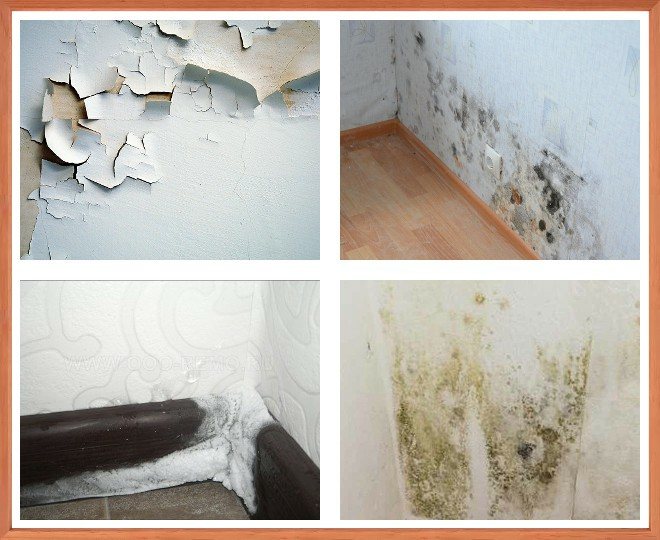

There are several options for how to determine the freezing of a wall in an apartment. Previously, it must be carefully examined, paying attention to changes such as:
- peeling of finishing materials (wallpaper, plaster);
- the appearance of condensation;
- the occurrence of frost in the morning and evening;
- strong cooling of the surface;
- abundant growth of fungus and mold.
Ways of how to determine the freezing of a wall in an apartment allow anyone to do this. All the changes you see must be captured on camera, as this in the future during the proceedings may become proof of the guilt of the organization,responsible for ensuring normal living conditions for people.
Before you get rid of the freezing of the walls in the apartment yourself, you need to carry out an act of checking the premises by a specialist. In this case, it will be possible to achieve compensation for the money spent in the future.
Preventing dampness
Keeping dampness to a minimum and preventing its occurrence in the future will allow compliance with some rules.
- The laundry must be dried outside living rooms or with the hood turned on for air extraction.
- When cooking, pots and pans should be covered with lids to prevent steam from escaping.
- In the bathroom, where the concentration of humidity is the highest, as well as in the kitchen, hoods and ventilation openings should be regularly cleaned from excessive debris, and these rooms should also be ventilated daily.
- In a private house, you can insulate the attic, as well as cover the walls with waterproofing material, preferably with pores.
- All flammable substances that form a lot of moisture, in particular, paraffin, are rarely used indoors.
- Ventilate all rooms in the house daily.
- Eliminate errors in the heating system in time.
- Use a dehumidifier to reduce humidity. This household appliance can easily cope with the problem of dampness, and its compactness will allow you to transfer the dehumidifier from room to room.
Several non-standard solutions
To cope with the problem of freezing of corner elements, it is recommended to use several non-standard solutions:
- It will significantly save you from this situation if you smooth or round the surface in the corners by applying a layer of plaster. Decorative elements can be applied over the material.
- Installation in corners of plasterboard structures. Lighting devices are mounted inside them. The light bulb has a thermal effect, which contributes to an increase in the temperature regime inside the structure and a decrease in humidity.
- Laying of joints with heat-insulating material.


If you cannot cope with the problem on your own, contact the services of specialists who can quickly solve the problem.
Reducing humidity
If the walls in interior rooms with high moisture content (bathhouse, bathroom) often get wet, then the matter is most likely in the ventilation system. Therefore, first of all, you should check the ventilation holes for unnecessary objects that may interfere with air circulation.
It is easy to check how clogged the ventilation channels are: we bring the burning candle to the air vent and see how the flame reacts: if it reaches for the grate, then the channels are not clogged and there is a draft. When there is no reaction of the flame to ventilation, additional devices need to be installed in order to establish air circulation.
When the holes are not clogged, and the draft is still weak, then at the bottom of the door you can make additional slots for air intake. If this does not help, a forced exhaust is mounted in the ventilation duct. Such fans are turned on only when there are no people in the room, as they can greatly harm health.
Experts advise installing fans with a built-in humidity controller in the bathroom. When the moisture rises, the fan works automatically, eliminating the air saturated with dampness.
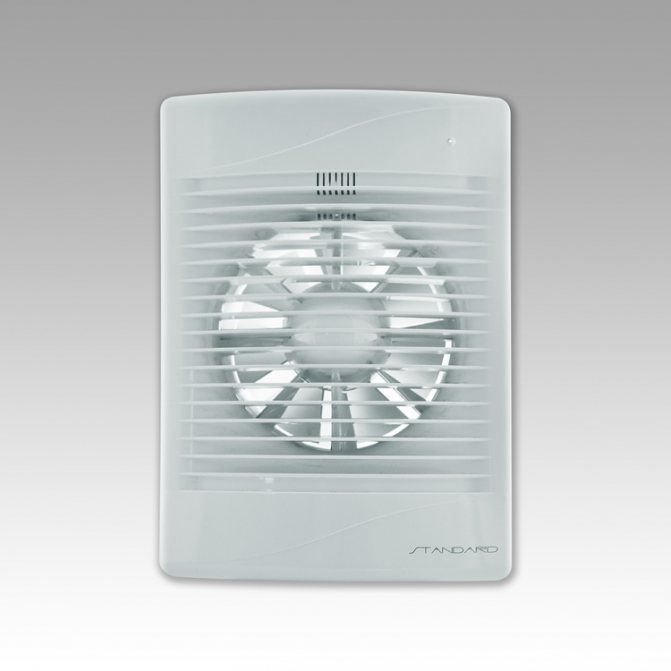

Why is it wrong to regulate the thermal conductivity of walls by their thickness?
Low thermal conductivity of solid bricks
The thermal conductivity of the currently produced solid brick is quite high, and the walls a meter thick will still not be as warm as in the noble and merchant buildings of the 18th century. It is known that high-rise buildings with “Soviet” walls 80 cm thick in severe frosts need additional heating.And even during the reconstruction of old wooden-brick buildings, they often simply immerse the lower brick floor into the ground, turning it into a kind of foundation, hoping that the additional costs for completion will be much less than the amounts that may be required for heating the lower brick floor.
Thermal conductivity coefficients of bricks:
"Super efficient" hollow brick: 0.25 - 0.26 W / m ° C
Hollow red brick: 0.3 - 0.5 W / m ° С
Solid red brick: from 0.6 to 0.7 W / m ° С
Sensitivity to sudden changes in temperature
A house with thick, non-insulated stone walls is extremely sensitive to sudden changes in temperature. It is enough to leave it for two or three days without heating, and moisture begins to condense inside the brickwork. This process rapidly captures more and more new layers up to the appearance of drops and ice crystals inside the room. The wall freezes, becomes loose, its thermal conductivity drops sharply to a catastrophic level, there is a danger of mold and mildew development. A damp multi-ton massif is very difficult to dry afterwards.
When is a thick wall good?
Thick stone walls are good for Mediterranean and tropical climates: there is no danger of freezing, seasonal and daily temperature fluctuations are smoothed out, in the heat you can do without an air conditioner.
Thick walls are risky and expensive. But well-insulated thin masonry in half or a quarter of a brick is another, completely unjustified extreme. The fact is that a moderately massive stone wall protected from heat loss is able to accumulate thermal energy and gradually release it into the space of the room. Warm, dry, brick walls are a great source of soft home warmth. They, like a sponge, absorb the energy of water heating systems or infrared emitters, and themselves become secondary sources of infrared energy. Comfortable conditions in such a room are quickly restored even after intense end-to-end ventilation; next to thick, well-insulated walls, you can put both a bed and a work table - their surface will not "cool".
Checking the front door
Put a second door to the apartment and it will immediately get warmer, one door may not always provide sufficient insulation from drafts, especially if it is cheap. It is easy to check if there is a heat leak or drafts through the front door, bring a burning candle to the door, if the flame is waving, it means that there is wind and heat escapes through the door. 7% of the heat energy goes through the roof, 16% through the windows, 30% through the ventilation, 5% through the basement and 42% through the front door and walls.
Calculating the thickness of a brick wall
When calculating this type, these parameters are used:
- dimensions of a standard brick: 250 * 120 * 65 mm;
- weight of one brick: 3.2 kg;
- the weight of one m3 of brick is 1600 kg.
At the minimum winter temperature, the wall thickness should be 51-64 cm, when using insulation from the street side, the thickness is reduced to 25 cm.
Based on the above, we will calculate the number of bricks for our house.
Let's take into account the fact that we live in an area with winter temperatures down to -25C °.
Wall dimensions:
- Height - 3 meters.
- Length: 2 walls 6 m each, 2 walls 4 m each.
Total wall area: 6 * 3 + 6 * 3 + 4 * 3 + 4 * 3 = 50 m2
The area of one brick: 0.012 * 0.065 = 0.0078 m2
Total number of bricks: wall area / area of one brick = (50 / 0.0078) * 2 = 12820 pieces. The multiplication by two happened because the wall will be built "in two bricks."
Total wall weight: weight of one brick * total number of bricks = 3.2 * 12820 = 41024 kg
Required volume of bricks: total weight of walls / weight of one m3 of brick = 41024/1600 = 25.64 m3.
To determine the cost of a brick, you only need to know the cost of one cubic meter. Further, this figure is multiplied by the required volume of bricks and the amount of one of your basic construction costs becomes clear.
Reasons for freezing walls and corners
Frost on the walls of rooms, as a rule, forms in apartments that are located in the corner of the house or are directed towards the wind.In addition, this is often a problem in cases where the outer wall is adjacent to buildings or an elevator shaft, rooms that are provided with sufficient temperatures for heating.
Important! Regardless of the location of your home, the main reason is insufficient sealing of the joints between the walls, so icing is usually observed in the corners of rooms. If the amount of waterproofing material is insufficient, over time you will become familiar with the problem of high humidity inside the walls, as a result of which - with freezing.
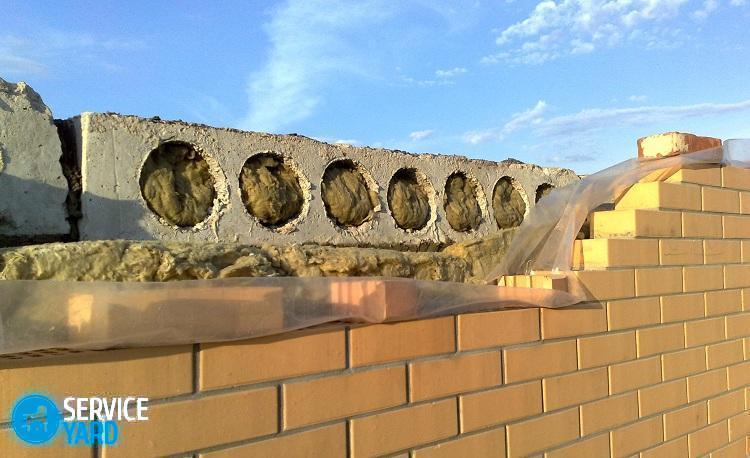

What are the reasons for the deterioration of waterproofing at home?
As a rule, freezing of walls is associated with a violation of the very structure of the house:
- In panel houses, such a problem can be insufficient thickness of partitions and ceilings, subsidence of the building, as a result of which the walls acquire cracks.
- If in the apartment, as well as on the street, you simultaneously observe high humidity and low temperature, then the wall of such a room will rapidly absorb water, which in the future will transform into frost.
- Another common prerequisite for freezing is incorrect wall insulation inside the room. If the thickness of the insulating material is insufficient, and the work was carried out without strict adherence to technical rules, then soon you will encounter increased wall moisture, the formation of mold and mildew.
Important! Such defects are fraught with damage to cosmetic repairs and compromised health of homeowners, so these problems require immediate elimination.


Among the other reasons why the wall freezes, they determine:
- depressurization of interpanel seams;
- in the winter, insufficient heating of the house;
- violation of the sealing of windows, balconies and loggias, doorways;
- constant drafts;
- frequent increase in humidity by the apartment owners themselves;
- terrible exhaust system as well as ventilation.
The reasons for the formation of freezing and its consequences
Freezing of walls is a fairly common problem, which not only violates the microclimate inside the house, but can lead to a deterioration in people's well-being. The reasons for such problems are the following factors, personifying the violation of construction technology:
- the presence of through voids inside the masonry;
- insufficient sealing of seams;
- lack of solution;
- lack of insulation.
Neglect of technical standards or banal negligence on the part of builders leads to the fact that the surface of the wall cannot fully perform the functions assigned to it. The above factors contribute to the formation of cold bridges through which air penetrates deep into the wall, which is expressed in the formation of condensation on its surface. This process is due to a shift in the dew point, which is normally outside.
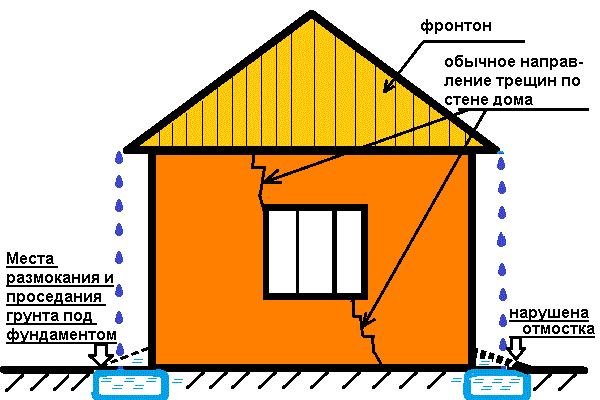

Some causes of freezing of the house and the appearance of cracks.
If the structure of the brickwork is disturbed, the contact point of cold and warm air shifts, contributing to the formation of condensation inside the apartment.
Constant wetting of the surface in combination with warm air inevitably leads to the development of mold, which is a threat to health and spoils the entire appearance of the room. In turn, in winter, with a significant decrease in the air temperature outside, the condensate can freeze, transforming into crystals of ice fungus. This state of affairs requires a detailed study and implementation of measures aimed at eliminating the causes of freezing and the negative consequences of this process.
How to eliminate the inconvenience?
Before proceeding with a comprehensive prevention of the consequences, find the place of freezing and determine the cause. To do this, very carefully examine the wall and try to find out what caused the frost to appear.
If you have already found the cause, you should proceed to eliminate the resulting defects. For this procedure you will need:
- composition for leveling walls;
- brush, spatula;
- coarse sandpaper;
- acrylic primer.


To grout the cracks, proceed as follows:
- Remove tiles, wallpaper, or paint from the wall.
- Treat all existing cracks and cracks with a putty or other mixture that is designed to level the walls.
- After drying, level the wall with sandpaper.
- Apply a primer.


We recommend doing the entire procedure several times, gradually increasing the grout layer.
Important! You should not use mounting foam to fill cracks, since it perfectly absorbs moisture, letting in all the excess water inside the room.
However, the above method is only elimination of the consequences, but not the reasons for the freezing of the walls. In order to get rid of the main problem forever, you will need high-quality and effective external wall insulation.


AKTERM Anti-condensation
Thermal insulating, anti-condensation coating on water dispersion, designed to prevent the formation of condensation, mildew and mold in industrial and domestic use with operating temperatures from –60 ° C to + 150 ° C.
More details
- refrigeration or air conditioning systems,
- water pipelines,
- metal structures.
A suitable environment for using the product is the microclimate of refrigerant piping and refrigeration systems. It is an excellent protection if you need to avoid condensation, snow and ice. The leader among the remedies for frozen joints of walls in the room, AKTERM Facade allows you to save a building from destruction at a basic level, both outside and inside. Insulate brick and wood walls, along with other materials, using modern technology.
The problem of freezing corners can arise in various situations - the solution requires the help of professionals and the correct choice of materials and tools. Thermo paint Akterm is the most correct and modern way to deal with the problem of freezing of corners, a high-quality means of prevention.
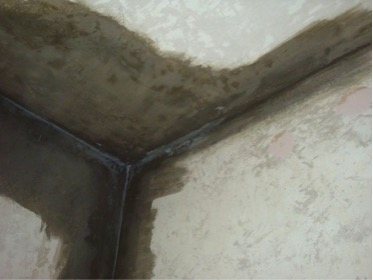

Liquid insulation Akterm is an example of a high-tech means for protecting a room from the cold. The material is designed to meet all the requirements for the quality of a heat-insulating agent Certified quality confirms that Akterm is a worthy analogue of well-known European remedies for heat loss.
Freezing can occur in a house made of any material - wood, brick, concrete. There are only two reasons for freezing - the physical characteristics of any wall as a vertical surface and errors, shortcomings during construction.
- Physical reason: The wall will always be a cold bridge, especially during the winter months when the ambient temperature is much lower than the indoor temperature. The appearance of condensation in this case is natural. Consequences of condensation formation - freezing of corners.
- Human factor: mistakes or deliberate flaws in the construction process will certainly affect the further operation of the house. Each wall material has its own norms for the amount of insulation, mortar. If the norms are not met, then the result will be unfavorable.
It is worth noting that even with reliable external insulation, the wall can still freeze through, since the dew point will shift and condensation will form. Gradually, the insulation will lose its protective properties, and the wall will freeze through.
To prevent this from happening, it is recommended to provide the house with insulation outside and inside. It is also worth carrying out preventive measures by applying a layer of liquid heat insulator. In addition, all seams must be sealed.
The reason for freezing can be too thin walls - in this case, the wall freezes over the entire area.Focal freezing occurs more often - in a certain place in the corner of the room, at the bottom near the floor in the corner, between the ceiling and the wall. The problem is solved by external insulation and internal application of thermal paint.
There are also several architectural techniques that will help prevent condensation and freezing of walls: rounded corners, pilasters at the corners. In any case, thermal insulation with Akterm will help prevent the minimum possibility of freezing.


The protective properties of the thermal paint make it possible to create a protective barrier against the formation of condensation. Any building material used for the construction of houses loses its properties after freezing. A special thermal paint for facade works from Akterm will protect the wall material from freezing. Suitable for any clean, dry and durable surface.
Laboratory research and the experience of many users have confirmed that Artherm is the most reliable protection against condensation formation. Testing was carried out on walls made of various materials, on pipes, on various metal structures.
To ensure the walls are protected from freezing, it is worth using Akterm liquid insulation. This requires the thermal paint itself, a roller or a spray gun. The work can be done by hand:
- The surface to which the thermal paint is applied must be solid, clean and dry. To do this, prepare the surface.
- Apply in one coat using a spray or roller. More often than not, this is enough. The thermal paint dries for about a day. In addition, if you need to apply several coats, you must wait until the previous one is dry. To make the layer come out even, and the thermal paint is spent economically - use a spray gun.
Prevention with Akterm will prevent the possibility of condensation and freezing of the walls.
Warming problem areas
Wall insulation is most preferable to do outside, because internal insulation has a number of disadvantages:
- Internal thermal insulation, due to the thickness of the materials used, can significantly reduce the size of the usable area, which is quite important for the inhabitants of panel houses.
- Failure to comply with the correct insulation technology is fraught with an even worse condition of living conditions and increased humidity in the apartment.
- With the help of internal thermal insulation, you will not avoid the need to change heating and ventilation systems.
Important! Internal insulation also has a number of advantages. You will not need to obtain permission to convert the facade from the management company. In addition, you can insulate the apartment from the inside on your own.
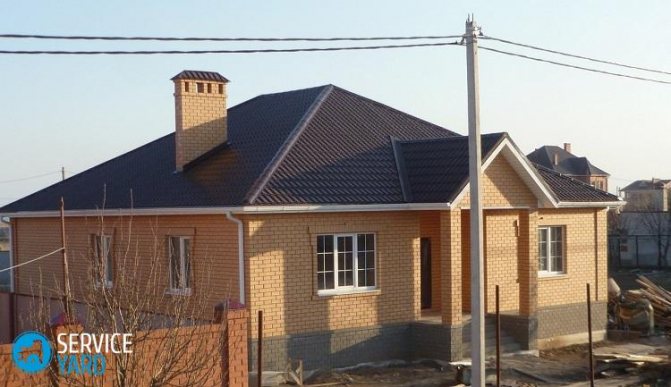

Panel houses can be insulated with warm plaster or liquid materials. However, all these modern materials are still insufficiently studied. Moreover, such means do not solve the problem of dispersed interpanel seams, as well as cracks. It is recommended to insulate the house from the front side. If you live above the first floor, you will have to seek help from a construction company, which will take over the entire process.
With the help of insulation, the thickness of the walls will increase quite strongly, which will increase the average temperature in the living room. In addition, by capturing approximately 30–40 cm of the neighboring wall, you can completely solve the problem of blown interpanel joints.
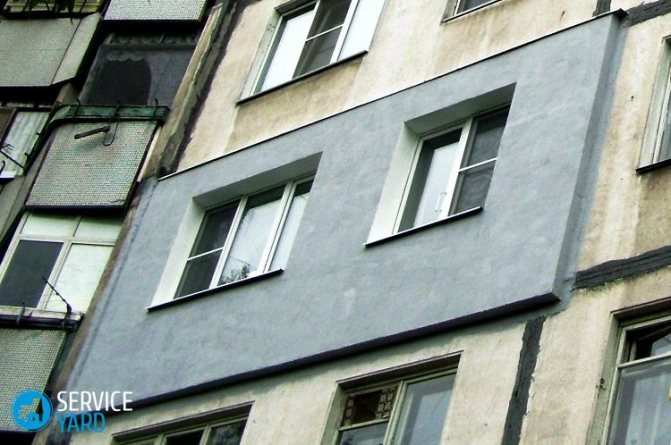

Visual insulation of the apartment
Do you think that adding color to your home is impossible? Everything is possible! Scientists have proven that bright colors warm up better than pale colors. Feel free to buy pillows, curtains and blankets of bright colors and the house will immediately become one degree warmer.
Let there be light!
An additional source of light in winter is, oddly enough, white walls. Candles and additional lamps and floor lamps are also suitable.
Self-hypnosis
A person with the help of self-hypnosis can do a lot, including getting warm.So, if you look at a photo of a loved one or a four-legged friend, you will immediately feel warmer.
Insulation of an apartment by means of repair
The fundamental approach involves the insulation of the apartment through renovation. What could it be?
Underfloor heating is convenient, but there are two drawbacks - it must be done immediately during the repair, after which it is already costly. And the second minus of the heated floor is that it eats electricity.
To make the apartment warm, you can raise linoleum or another floor, laminate and lay sheets of chipboard or fiberboard between it
And finally, most importantly, British scientists have proved that in a hot apartment, the human body stops producing its own heat and the person begins to get fat. So if you don't want to get fat, don't make your apartment too sheltered from the winds! But that's not all, bacteria and viruses are very fond of a warm apartment, so if you don't want to get sick often, make your home cozy, but not hot.
Why does the wall freeze in an apartment of a panel house?
The presence of a large amount of moisture in the wall of the house leads to its freezing. Through a damp wall, frost will get to your apartment much faster.
Among the many reasons that lead to such a situation, we highlight the main ones:
- Poor or damaged waterproofing can be the cause. This problem is most urgent for residents of high-rise buildings on the top floors;
- Poor ventilation in the room can also lead to the accumulation of moisture in the wall, since the walls do not have time to dry out;
- Poor quality work of builders during the construction of a house, poor processing of cracks, unscrupulous sealing of windows and other openings;
- Weak heating during the cold season. Here, the reason is that the walls do not warm up well, therefore, they do not dry out, and moisture begins to accumulate in the panels of the house.
- A house that requires major repairs. This is the most difficult situation in terms of correction. The numerous cracks that appear in the panels of the house and grow larger every year also collect moisture in the wall.
Find out how to solve exactly your problem. Write your question through the form (below), and our lawyer will call you back within 5 minutes, advise free of charge.
Drawing up a complaint about freezing of walls in an apartment
Any complaint about freezing of walls in an apartment must be supported by an appropriate evidence base. It includes:
- an act of checking the premises by a specialist;
- photographs of a frozen wall;
- written refusal of the Criminal Code to take action to correct the problem, etc.
The more thorough the text of the complaint, the more chances the applicant will have to get help before getting rid of the freezing of the walls in the apartment.
The consideration of a complaint takes a certain period of time. That is why experts advise to handle it immediately after the first signs of freezing appear. In this case, before the onset of severe cold weather, it will be possible to fix the problem with the wall.
Thermal imager and freezing of walls in the apartment


